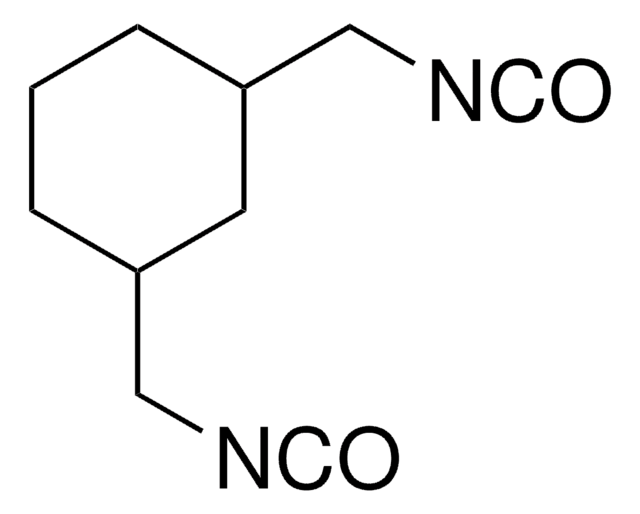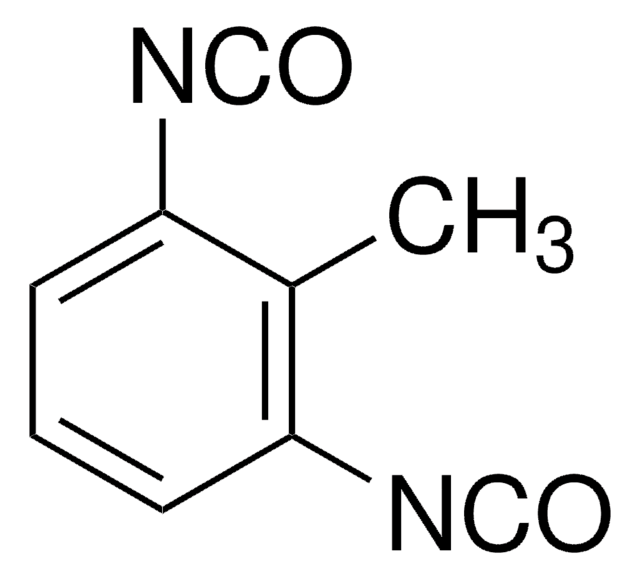317624
Isophorone diisocyanate
98%, mixture of isomers
Synonym(s):
5-Isocyanato-1-(isocyanatomethyl)-1,3,3-trimethylcyclohexane
About This Item
Assay
98%
form
liquid
refractive index
n20/D 1.484 (lit.)
bp
158-159 °C/15 mmHg (lit.)
density
1.049 g/mL at 25 °C (lit.)
SMILES string
CC1(C)CC(CC(C)(CN=C=O)C1)N=C=O
InChI
1S/C12H18N2O2/c1-11(2)4-10(14-9-16)5-12(3,6-11)7-13-8-15/h10H,4-7H2,1-3H3
InChI key
NIMLQBUJDJZYEJ-UHFFFAOYSA-N
Looking for similar products? Visit Product Comparison Guide
General description
Application
- Production of polyurethane coatings for automotive and industrial applications.
- Synthesis of polyurethane elastomers used in medical devices and sports equipment.
- Production of polyurethane foams used in upholstery, insulation, and packaging applications.
- Use in the manufacture of adhesives, sealants, and binders.
- In the synthesis of bridged silsesquioxane(BSQ) by sol-gel polycondensation with 3-aminopropyltriethoxysilane. The polymer of BSQ can be used to prepare the moisture-resistant film for UV filters.
- As a healing agent in the preparation of polyurethane microcapsules by interfacial polymerization.
- As a monomer in the synthesis of highly monodispersed polyurea microspheres via precipitation polymerization.
Signal Word
Danger
Hazard Statements
Precautionary Statements
Hazard Classifications
Acute Tox. 1 Inhalation - Aquatic Chronic 2 - Eye Irrit. 2 - Resp. Sens. 1 - Skin Irrit. 2 - Skin Sens. 1 - STOT SE 3
Target Organs
Respiratory system
Storage Class Code
6.1A - Combustible acute toxic Cat. 1 and 2 / very toxic hazardous materials
WGK
WGK 2
Flash Point(F)
325.4 °F - closed cup
Flash Point(C)
163 °C - closed cup
Personal Protective Equipment
Certificates of Analysis (COA)
Search for Certificates of Analysis (COA) by entering the products Lot/Batch Number. Lot and Batch Numbers can be found on a product’s label following the words ‘Lot’ or ‘Batch’.
Already Own This Product?
Find documentation for the products that you have recently purchased in the Document Library.
Customers Also Viewed
Protocols
HPLC Analysis of Isocyanates on Titan™ C18
Our team of scientists has experience in all areas of research including Life Science, Material Science, Chemical Synthesis, Chromatography, Analytical and many others.
Contact Technical Service





